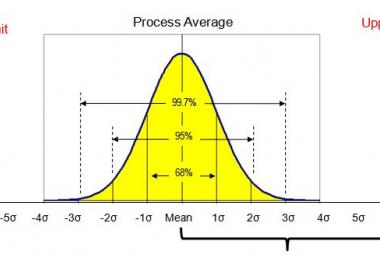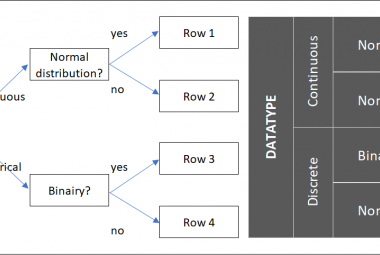In the Toyota Production Development System, James M. Morgan and Jeffrey K. Liker explain how Toyota can develop a new car in 15 months while their competition needs at least 24. From this book, we learn that Toyota does more than Lean manufacturing, they also have Lean Product Development System (LPDS). In this book, the authors describe 13 Lean development principles, divided in three categories: people, process and technology, which are necessary to be able to deliver customer value.
This article will discuss each of them shortly.
The first category of principles have to do with PROCESSES. In this case, we are talking about the process of bringing product from concept to production. This part of the LPDS includes the first four principles.
Principle 1: establish customer defined value to separate value added from waste, has everything to do with one of the foundations of lean: improving the lead time of your process by removing waste. The most important waste in PD processes are engineering waste, where a part is designed ´wrong´, and waiting for information waste, due to overburdened team members (muri).
Principle 2: Front-load the PD process while there is maximum design space to explore alternative solutions thoroughly. This principle describes the need for cross-functional collaboration early in the design process, to make sure rework is prevented later in the project due to poor decision making in the early stages.
Principle 3: Create a leveled product development process flow, which means that we always should try to improve the flow of a process by eliminating waste. To help you find the waste, the authors describe a form of value Stream mapping (VSM), in which the time line with milestones are written on the top of the page, and important decisions and meetings are listed as process steps. Also, process steps usually consists of feedback loops, which should be visualized in the VSM as well.
Principle 4: utilize rigorous standardization to reduce variation, and create flexibility and predictable outcomes. Standards for engineering include checklists for every design step that they repeatedly work on, and trade-off charts, which explain how a decision was made based on 2 variables, for instance speed and fuel consumption, or noise and back pressure.
When the processes are defined and improved, we can focus on the PEOPLE part of the LPDS.
Principle 5: develop a chief engineer system to integrate development from start to finish. The chief engineer within Toyota is an important role for every product development program. In short, this is a project leader and senior engineer in one role. He represents the voice of the customer and is responsible for the development value stream, from concept to production.
Principle 6: organize to balance functional expertise and cross functional integration. This is the challenge of integrating the chief engineer role into the organizational structure. At Toyota, the chief engineer is responsible for the delivery of the product and the voice of the customer, while the functional manager is responsible for the development of his team members. Not only is having an integral lead better for the process, it also reduces silo-thinking within departments.
Principle 7: develop towering technical competence in all engineers. Toyota prefers specialists over generalists. Every engineer has to have a clear development path where he learns the specific skills needed to join a development team in a certain role, and the development paths should be standardized.
Principle 8: fully integrate suppliers into the product development system. Companies should manage their suppliers the same way as they manage their own production. Supplier’s expertise can be very valuable to the design process, so why wait with involve them until the design phase is finished?
Principle 9: build in learning and continuous improvement. Just as in manufacturing, one of the most important aspects of the project is the reflection (hansei) afterwards on personal, team and project level. What did we learn? How can we improve our processes? Toyota plans 3 2-hour sessions of reflection after each project. This important part of the process is often neglected, even though the ability to learn faster than your competitors could possibly be the only sustainable competitive advantage.
Principle 10: build a culture to support excellence and relentless improvement. A culture is defined by the current generation of leaders and defines which leaders will emerge next. Leaders should therefore set the example of learning and always ask about the improvements. Within organizational culture; a documented well thought kaizen is a sign of a learning organization which takes time for reflection, while a just-do-it culture a sign is of a hurry-up culture.
The goal of the third category is to use TOOLS AND TECHNOLOGY to help the people in the organization add more value to the customer. In this part, Morgan and Liker define the final three principles of the LPDS.
Principle 11: adapt technology to fit your people and processes. This seems logical, but traditional firms act the other way around and alter their processes to fit a certain tool. A tool or technology should be integrated in your process, specific solution orientated and enhance your people (not replace them).
Principle 12: align your organization through simple, visual communication. There are multiple lean tools that can support communication between team members and between teams. Hoshin Kanri is used for goal alignment between departments, team boards and for development teams the Obeya is used for alignment between team members. Finally, A3 can be used for problem solving on individual level.
Principle 13: use powerful tools for standardization and organizational learning. Next to the checklists and trade-off charts mentioned before, one could use decision matrixes and benchmark reports to visualize why a certain decision was made, which makes it easier to make a similar decision in the future.
The 13 principles of the Lean Product Development System can help all organizations to structure and lean up their development processes. Each of the principles includes some examples of how Toyota differentiates itself from its competitors from which we can learn. Since lean manufacturing is nothing without good products for which there is demand, this book is a valuable addition to everybody’s lean library.
Continue reading:
Office Kaizen - W.Lareau (summary)
REFERENCE:
Morgen, J. M., & Liker, J. K. (2006). The Toyota Product Development System. New York: Productivity Press. (order this book)












